When the weather reports call for freezing temperatures to come, we begin thinking of winter pyjamas, winter woollies, and household heating. But we don’t always think about the affect cold and freezing weather has on our plants. Today we are going to discuss what frost is, the dangers of frost to your garden, and how to protect your garden from frost.

Why Should I Worry About Frost?
Frost is a nasty villain when it comes to our plants. It causes injuries to our plants by causing ice crystals to form in the plant cells. The not only makes water unavailable to plant tissue, disrupting the movement of fluids. It also causes frost-damaged leaves that appear brown or black, shrivelled, and water-soaked.
Plants are generally classified based on the minimum temperature they will tolerate. As a result “hardy” classifications mean these plants can withstand short-term freezing. In comparison “tender” are easily killed or injured by freezing temperatures. So if you’re trying to grow your own avocados or citrus, you might be in trouble, as they are some of the most tender plants.
What is Frost?
We define frost as a thin layer of ice on a solid surface, which forms from water vapour in an above-freezing atmosphere coming in contact with a solid surface whose temperature is below freeing. This results in a phase change from water vapour to ice as the water vapour reaches the freezing point.
Frost is most common in low-lying areas where warm air rises and cool air sinks. The cool air is denser than the warm air. That means there are more water molecules in the cool air than there are in the warm air. As the cool air collects in the low-lying areas, frost forms.
How Does Frost Form?
There are two main types of frost formations, radiation and advection.
Radiation Frost
Radiation is the most common type of frost formation in Australia. It occurs when the ground, or ambient air, cools down by the loss of heat to the atmosphere. This commonly occurs under clear skies and with little to no wind. It begins at ground level and rises to higher objects.
Advection Frost
Advection frost is also known as freeze. It can occur at any time or day or night. Frost form when a mass of very cold air moves over an area, replacing the warmer air in that area. It is not affect by cloud cover.
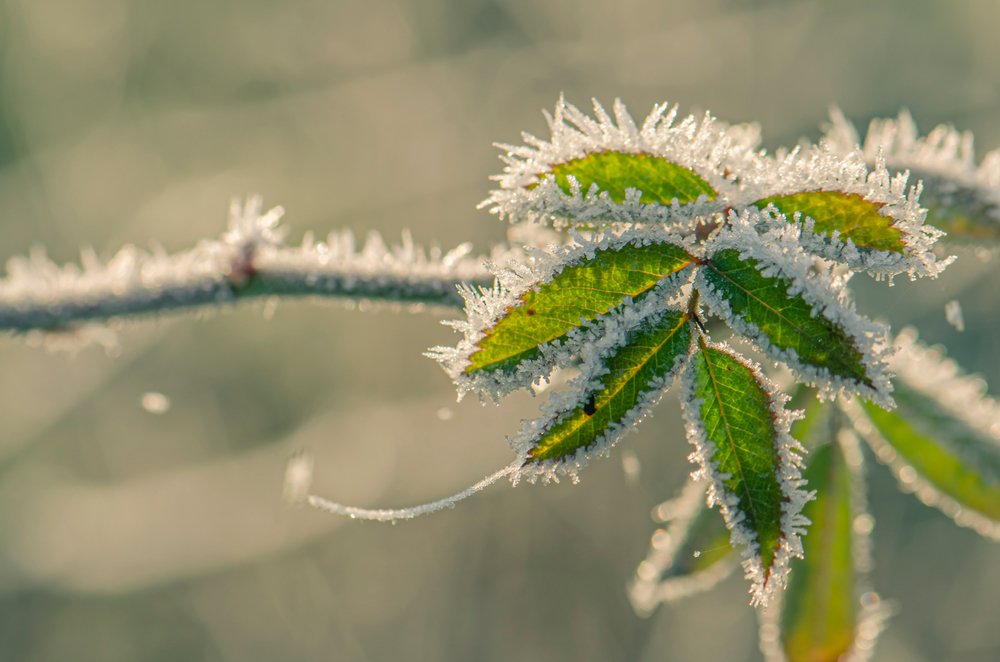
Types of Frost
Frost can take several different forms after their initial development as their radiation or advection. This includes:
White Frost/Hoar Frost
White frost, also known as hoar frost, is a deposit of ice crystals formed by the direct deposit on objects exposed to the air. Water vapor in the air freezes upon contact with an object with has a surface below 0oC. This a common kind of frost in Australia that we see on tree branches, car windscreens, and grass stems.
Black Frost/Dry Freeze
Black frost or a dry freeze happens when the temperature drops to a freezing point but the adjacent air does not contain enough moisture to form white frost on exposed surfaces. As a result, this causes an internal freezing of vegetation, killing it. This type of frost is thankfully, fairly uncommon in Australia.
Killing Frost
This type of frost occurs when the frost period is sufficiently severe that it either ends the growing season or delays the beginning of the growing season. This is why the are called killing frosts.
Frost Hollows
Some areas are particularly prone to frost. They are sometimes referred to as frost hollows or frost pockets if they are very small. These frost hollows often occur in valleys due to cold air drainage as the air at the top of the hill cools at night. It drains to lower levels and results in frost forming in valleys, even when surround areas are frost free.
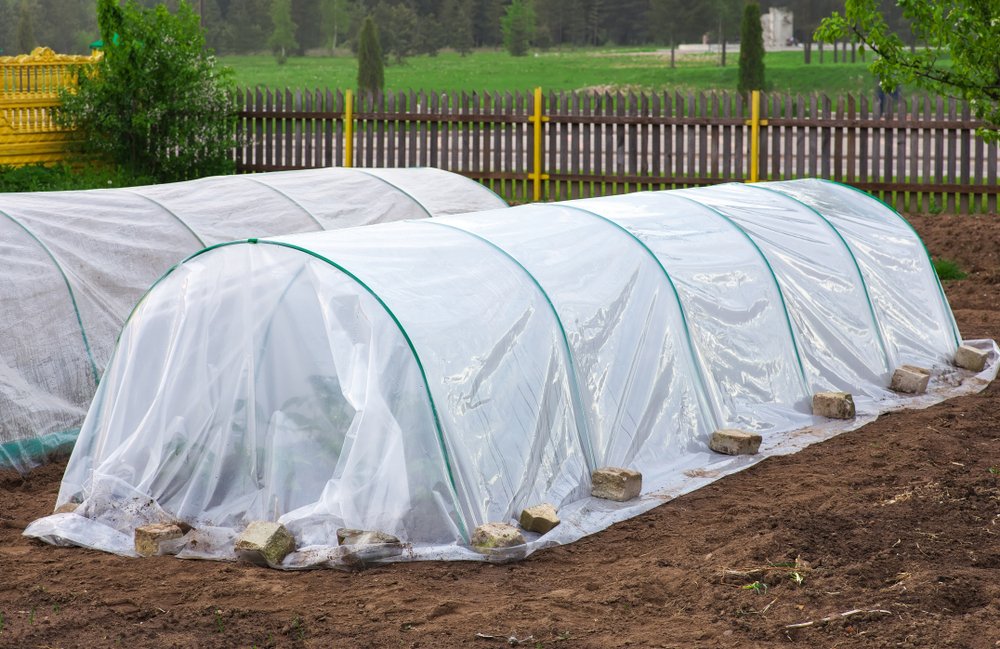
What Affects Frost Formation?
The formation of frost is affected by a range of factors, including:
Cloud Cover
Clear skies are best for the escape of radiation (heat) from the Earth’s surface. Clouds, however, reflect that heat, slowing the cooling of the surface. Tree wraps and crop covers can be used to manage the risk of frost.
Humidity
If the air is more humid, the internal processes related to the change of the state of water between vapour between vapour-liquid-solid causes the release the heat, also know as latent heat. This slows down cooling, decreasing the likelihood of frost. Spraying water on crops can help prevent the development of frost in these cases. As the liquid becomes ice, it releases heat, slowing down the cooling process. Be careful how much water you use as excessive ice can build up and harm your plants.
Surface Winds
During the night, wind can act to mix the cool air near the surface with warmer air above it. This slows the radiative eat, cooling at the surface, making frost less likely. We have even tried wind machines and helicopters to stir up the air around crops to reduce the likelihood of frost – not exactly the best option for your garden. You can buy garden-friendly movement of air that helps enhance the effectiveness of frost prevention.
Australian Gardens and the Danger of Frost
Australian gardens and farms are highly susceptible to the dangers of frost. Frost can have a devastating effect on our vegetation, crops, as well as home gardens, plants, flowers, vegetable patches, and fruit trees. The impact frost can have on your garden depends on the severity of the frost and the crop or plants in questions – as some plants do survive well or even grow better with exposure to frost. Remember that frost is a localised phenomenon and the severity varies depending on the area, plant type, and what you do to defend your garden from frost.
What to protect your garden? Explore our suggestions below.
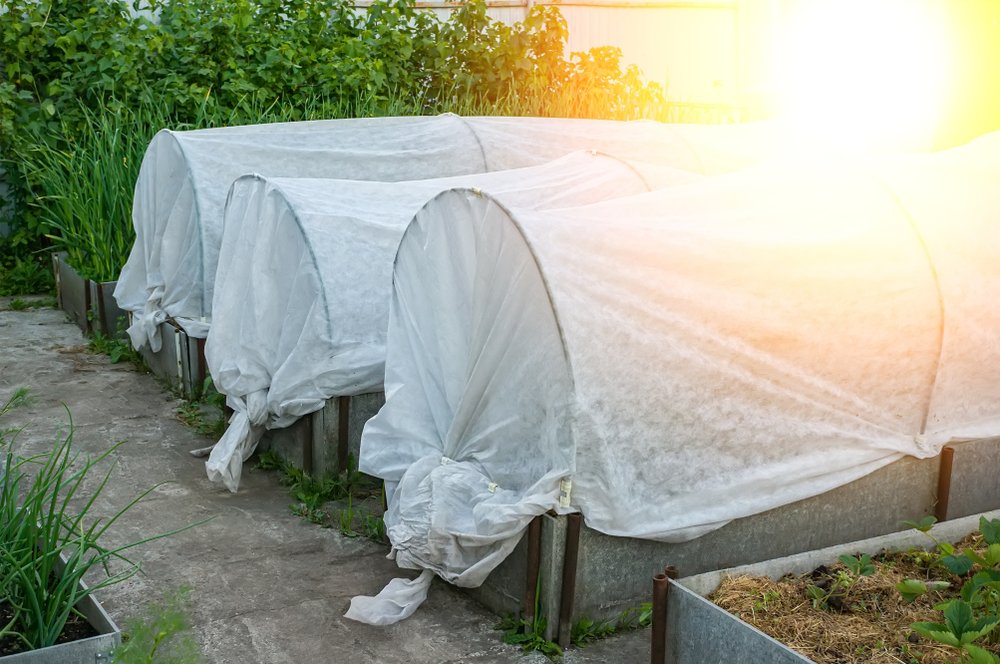
What Should I Do to Protect My Garden From the Dangers of Frost?
There are other defensive measures you can take to protect your gardens. These include:
Mulch and the Dangers of Frost
It is important that you remember to mulch your soil around your plants and shrubs. Mulching protects the roots of plants and helps minimise heat loss. It also helps retain soil moisture. This can help protect your more vulnerable plants.
Water
If it’s not going to rain before the temperature drops or before you begin frost season, then it is important that you should water your plants thoroughly. moist ground stays warmer than dry ground so watering plants before a frost will help insulate the root structure of the grass and plants. As a result, the decreases the potential for cold injury for your plants.
Covering Plants Against the Dangers of Frost
It is important to choose the right covering for your plants, too. If your plants are covered in plastic, they could touch the plastic during the frost. Because the plastic, unlike a fabric covering, can get cold, the plant can still get damaged. As a result, you should always put a blanket down, first, between the plastic and the plants. Or you can use stakes in order to ensure any of the materials you use won’t touch your foliage – especially the plastic. There is a wide variety of materials you can choose to cover your plants to protect them from the dangers of frost, including: bed sheets, blankets, drop cloths and plastic sheets.
Garden Site Selection
One of the biggest ways to prevent frost damage to your garden is choosing the right place to plant your garden in the first place. Soil properties, canopy cover, proximity of other structures, plants, surface reflectivity, and elevation all affect the heat radiation of your garden. It is important that you avoid planting delicate plants in open, exposed areas or low areas where cold air settles. Instead it is better to place them near a south or west face wall, which will absorb heat during the day and radiates it at night. You can also use fences, shrubs and eve boulders as protection for plants.
Succulents and the Dangers of Frost
Of all plants, succulents need special care. While they are stonecrops, which are meant to be very cold hardy, many popular succulents are quite temperature sensitive. If the temperature often dips low, or you experience a lot of frosts, you may want to move your succulents inside. Place them in pots so you can move them around or move them under house eaves, trees, or a deck. No matter if you keep them outside or inside, succulents need to be kept drier than most other plants. When a succulent’s cells plump with water, they can burst when a frost causes them to freeze. Don’t remove the leaves until they start to decay. Leaving dead, upper leaves protects the lower ones.
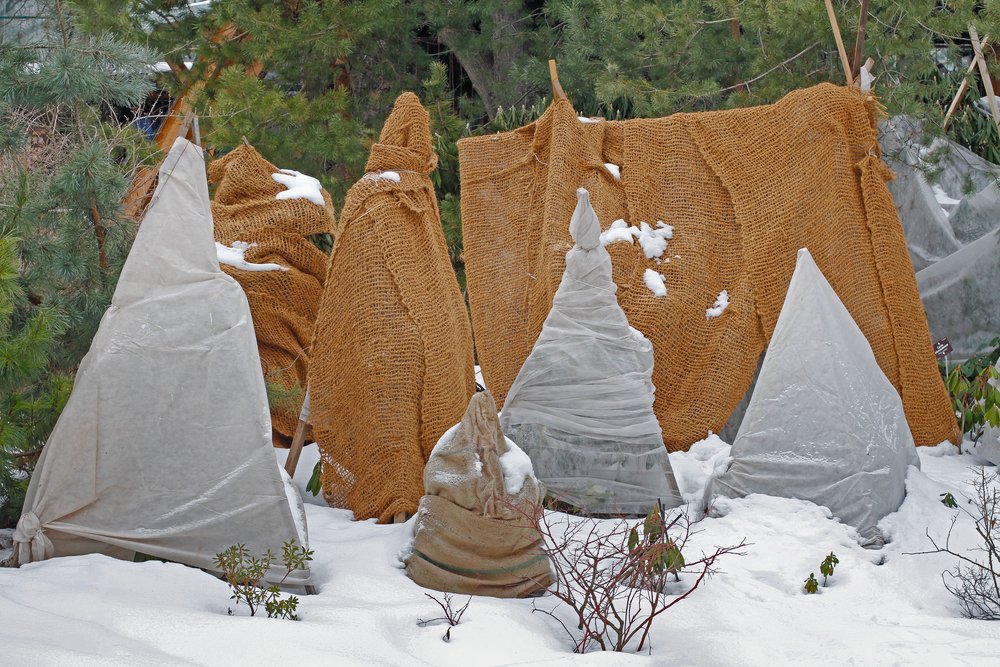
What Do I Do After a Frost?
If you’ve followed all our tips above and your plants have survived the winter frost, then what do you do next?
Watering
First, check the water needs after a freeze. If the soil is still cold and frozen, this means water isn’t getting to the roots. This is drying out the roots, killing your plants. You soul, in this case, water your plants in the afternoon or evening the day after a freeze. This allows the temperature slowly rise and you can water your garden to ensure it gets enough water.
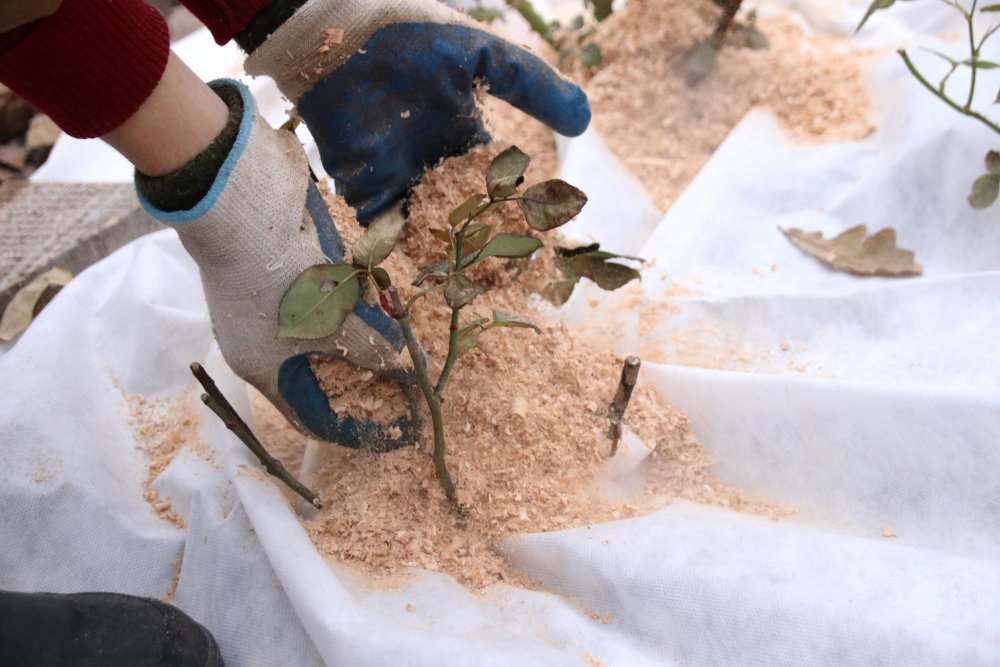
Pruning
After a frost, your soft-stemmed, non-woody plants like begonias and impatiens may be pruned back to their living tissue. Pruning is optional but it does help your winter garden to stay looking neat and tidy. Further, cutting back the dead, oozing tissue improves the health of your plant.
We generally recommend you prune woody plants only when new growth appears in early spring. This is because pruning plants during cold temperatures makes them more vulnerable to damage. By the time spring comes around, the damage will be more obvious, meaning you will have to remove large damage sections of your plants or even trees.
The best way to work out if a woody tree or plant has been damaged by frost and/or cold weather, after this weather has passed, check the layer directly under the bark. You can do this by carefully scratching through the bark layer. If the plant is undamaged, then it will show a fresh, green layer. If the plant is damaged, it will show a sickly brown or even black. You will need to prune down below this discolouration.
However, it is important not to overreact to seeing these signs of damage. If you see signs of frost damage hold off pruning or digging up the plant. Wait until the warmer weather sets in and see if new leaves begin to sprout. If you see new growth around the base of the plant, then prune away. If you see no new regrowth, then it is time to dig up and replace the plant entirely.
What About Severe Temperatures?
Even in Australia we can get some abnormally cold winters. While they don’t happen often, they do happen. So what can we do when severe temperatures strike? Unfortunately, in the case of very severe cold, when the weather drops well below 0 (something that rarely happens in Australia), most plants will die, despite your precautions. Only your most hardy plants will survive and even they will suffer damage. The fact is, should we face abnormally cold weather, use it as a chance to start your garden anew in spring.
Want to know more about the dangers of frost and how to protect your plants for this coming winter? Come into one of our Aumann’s Garden Supply stores and talk to our amazing staff. They can help you with anything you need to keep your garden healthy and blooming beautifully!

